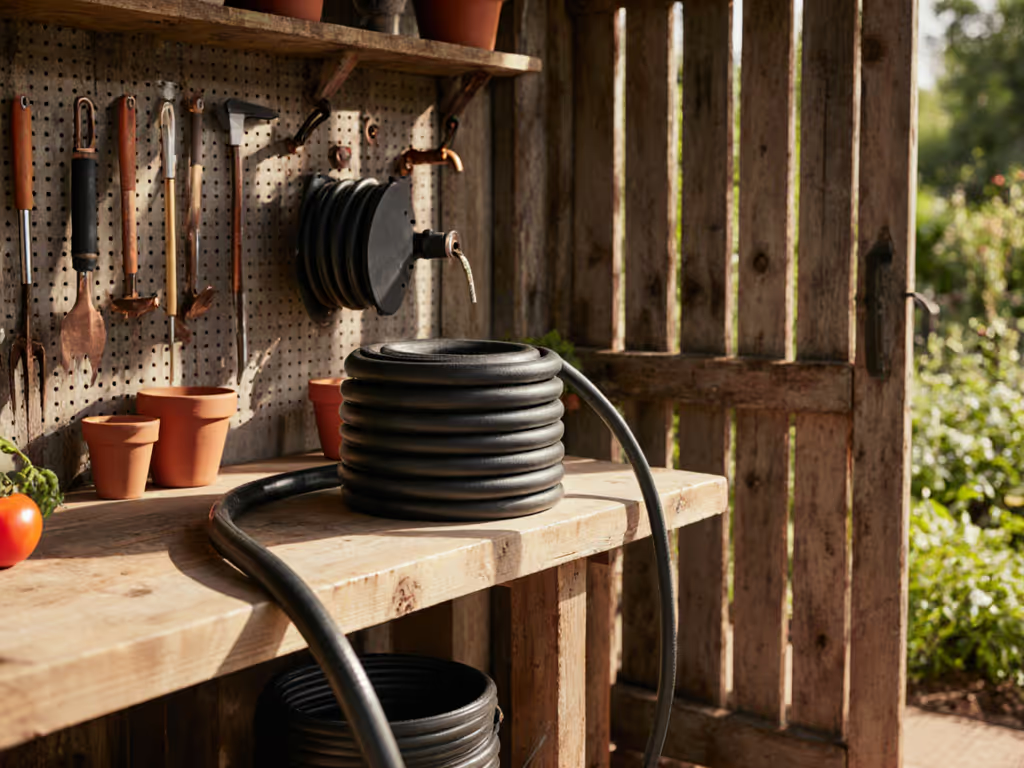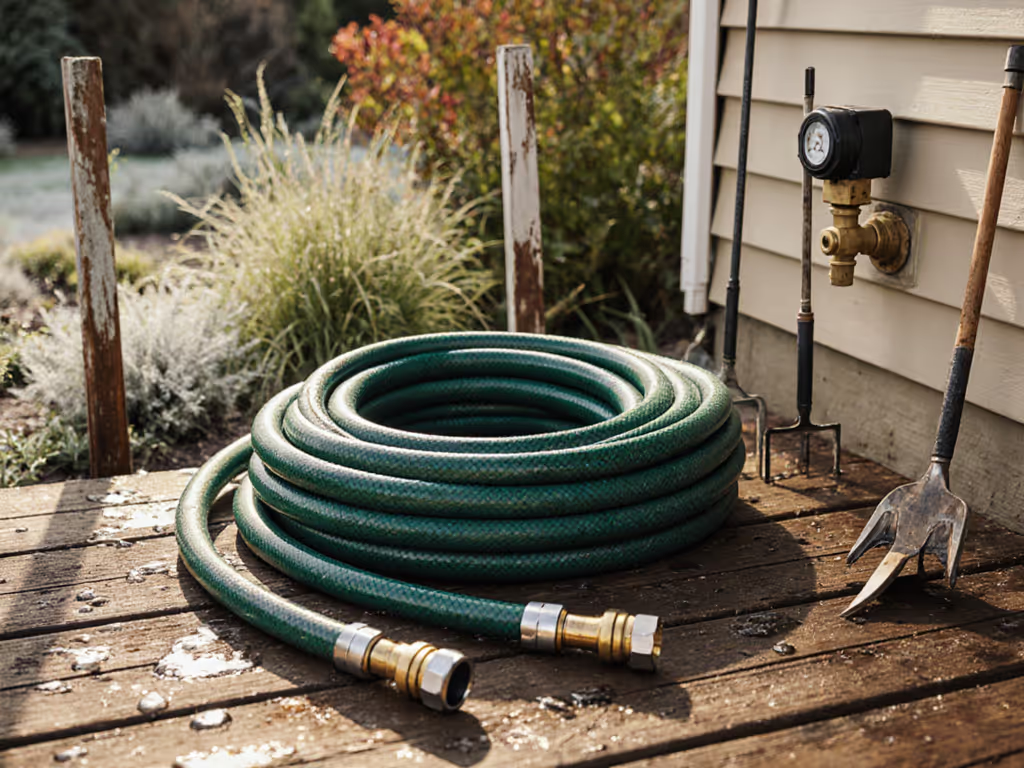
Optimal Garden Hose Length: Layout-Specific Calculator Guide

Finding the optimal garden hose length is one of the most overlooked yet critical decisions in your yard setup. Too short, and you're constantly stretching, straining, and risking leaks at connections. Too long, and you're wasting money, storage space, and water pressure, undoing your careful garden hose sizing guide calculations before you even turn on the spigot. Across three summers, I measured how excess hose length directly translated to wasted hours wrestling kinks and chasing leaks. That's when I learned the hard truth: the cheapest hour is the one you never spend redoing. This friction-averse guide delivers a checklist-first methodology to calculate your exact needs, no more, no less.
Understanding Why Hose Length Matters
Most homeowners grab a standard 50- or 100-foot hose without considering their actual layout. But water pressure drops significantly as hose length increases, especially with smaller diameters. A ⅝-inch hose delivering 24 GPM at 50 feet drops to just 12 GPM at 100 feet under the same pressure, a 50% reduction confirmed by industry flow rate testing. This isn't just theoretical; it's the difference between efficiently watering your garden and waiting twice as long for the same coverage.
Your specific garden layout directly impacts the water pressure you'll experience at the nozzle. Key factors:
- Distance from spigot to farthest watering point (the foundational measurement)
- Number of bends and obstacles (each 90-degree turn adds equivalent resistance to 3-5 feet of straight hose)
- Elevation changes (uphill sections require more pressure to overcome gravity)
Remember: longer hoses create more friction inside the tubing, reducing gallons per minute (GPM) at your nozzle. This impacts everything from sprinkler effectiveness to car-washing efficiency.
Measuring Your Garden Layout Accurately
Many homeowners make the critical error of measuring in straight lines without accounting for real-world obstacles. For garden layout planning that prevents future frustration, follow this checklist:
- Mark your starting point (the outdoor faucet location)
- Walk your actual watering path (not a straight line) to your farthest point, noting:
- Physical obstacles (trees, sheds, flower beds)
- Required bends or corners
- Elevation changes
- Add 5-10 feet for maneuverability around corners and to reach into garden beds
- Note multiple zones if your garden requires sectioning for efficient watering
This path-based measurement method accounts for the reality that hoses rarely travel in straight lines across a yard. Measure during different seasons if possible, some paths become obstructed by seasonal growth.
The Hose Length and Water Pressure Relationship
Water pressure conservation isn't just about environmental responsibility; it's about practical effectiveness. Every foot of hose creates friction that reduces your available pressure at the nozzle. The relationship isn't linear, it's compounded by hose diameter:
| Hose Length | ½-inch Diameter | ⅝-inch Diameter | ¾-inch Diameter |
|---|---|---|---|
| 25 feet | 22 GPM | 38 GPM | 60 GPM |
| 50 feet | 14 GPM | 24 GPM | 40 GPM |
| 75 feet | 10 GPM | 18 GPM | 28 GPM |
| 100 feet | 7 GPM | 12 GPM | 20 GPM |
Based on standard 50 PSI home water pressure
This table reveals why simply buying the longest hose available backfires. For a deeper dive into diameter effects, see our 1/2 vs 5/8 flow rates. If your watering tasks require 15+ GPM (typical for sprinklers), a ⅝-inch hose becomes your minimum practical diameter once you exceed 60 feet. For most suburban yards, 50 feet of ⅝-inch hose delivers the best balance of pressure retention and manageable weight.
Calculating Your Optimal Hose Length
Here's my proven four-step process for determining your hose length calculator results:
Step 1: Measure Your Actual Path Using a 100-foot tape measure, trace your watering path noting:
- Straight sections (in feet)
- Each 90-degree bend (count as +3 feet)
- Each 45-degree bend (count as +1.5 feet)
- Any elevation changes (add 1 foot per foot of vertical rise)
Step 2: Factor In Your Water Pressure Check your home's actual water pressure with a $5 pressure gauge:
- Below 40 PSI: Prioritize shorter lengths (max 50 feet)
- 40-60 PSI: Standard range for most homes (50-75 feet possible)
- Above 60 PSI: Can support longer runs (75+ feet) but may require pressure regulation
Step 3: Match to Your Primary Tasks
- Vegetable gardening: 15-20 GPM minimum at nozzle
- Lawn sprinklers: 15-25 GPM minimum
- Car washing: 2.5+ GPM at wand
- Pressure washing: 2.0-5.0 GPM minimum
Step 4: Finalize with the 10-Foot Rule Take your measured path length and add 10 feet for flexibility, but never exceed 75 feet without verifying your pressure can support it. If your calculation exceeds 75 feet, consider installing a second spigot or using multiple shorter hoses with quick-connects.
This method consistently prevents the common mistake of buying a 100-foot hose "just in case", only to discover it barely delivers enough pressure for basic tasks. The 10-foot addition accounts for real-world maneuvering while preventing unnecessary length that degrades performance.
Practical Applications for Common Scenarios
Let's apply this framework to three typical garden setups:
Small Suburban Yard (¼ acre)
- Path measurement: 38 feet with 3 bends
- Adjusted length: 47 feet
- Recommended solution: 50-foot ⅝-inch hose
- Why: Delivers 24 GPM at nozzle, sufficient for sprinklers and gardening while remaining lightweight and easy to store
Large Corner Lot (¾ acre)
- Path measurement: 62 feet with 6 bends
- Adjusted length: 80 feet (but exceeds practical limit)
- Recommended solution: 75-foot ¾-inch hose OR 50-foot ⅝-inch plus 25-foot quick-connect extension
- Why: The ¾-inch diameter maintains 28 GPM at 75 feet, while the modular approach gives flexibility without constant pressure loss
Multi-Zone Vegetable Garden
- Path measurement: 45 feet but requires sectioning
- Recommended solution: 50-foot ⅝-inch hose with auto watering garden systems for beds
- Why: Provides adequate flow for drip lines while allowing you to rotate coverage without dragging hose through beds
For those implementing auto watering garden systems, remember that hose length affects not just your manual watering but also the pressure available for timers, filters, and drip emitters. Extended hoses can starve automated systems of necessary pressure, causing inconsistent watering, a hidden source of many garden failures.
Your Optimization Checklist
Before purchasing, verify these critical points:
- Measured actual watering path (not straight-line distance)
- Counted all bends and added equivalent feet
- Checked home water pressure with gauge
- Selected diameter based on calculated length and GPM needs
- Ensured all components use standard GHT (garden hose thread) fittings
- Verified potable water safety if watering edibles or pets
- Planned storage solution that prevents kinks and UV damage For durable, tidy storage, see our weatherproof hose reels guide.
Buy once, configure right, keep the water and time in. The total cost over lifespan of a properly sized hose beats cheap replacements every season, especially when you factor in the hours saved from not redoing work. I've seen rental properties where upgrading from mismatched, leaky hoses to properly dimensioned 50-foot ⅝-inch rubber lines with stainless quick-connects eliminated 3-4 hours of maintenance monthly. That's not just water conservation, it's time conservation.
Next Step: Measure and Calculate Today
Grab your tape measure and pressure gauge this weekend. Walk your garden path with paper in hand, noting every foot and bend. Plug your numbers into the four-step calculation method above, then compare against the flow rate table. Most homeowners discover their actual need is 30-60 feet, not the 100-foot default most buy. When you find your true optimal garden hose length, you'll never wrestle with inadequate pressure or unnecessary weight again. That's the kind of reliable, friction-averse solution that makes yard work feel less like work.
Related Articles





Best Garden Water Hose: Climate-Resistant Materials That Last
Match hose materials and components to the local climate - reinforced rubber for freezes, UV-stable synthetics for heat, and stainless fittings for corrosion resistance - then add drain-down valves and proper winterization. Stop leaks before they start, reduce water waste, and extend service life from one season to many.
